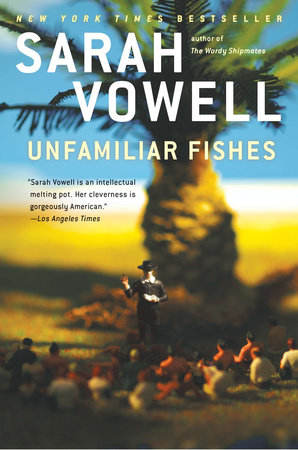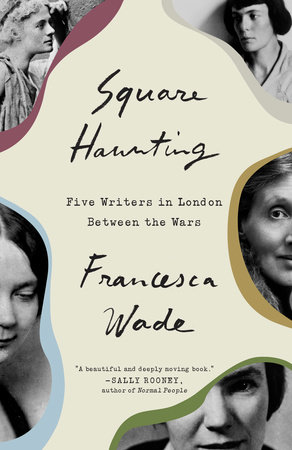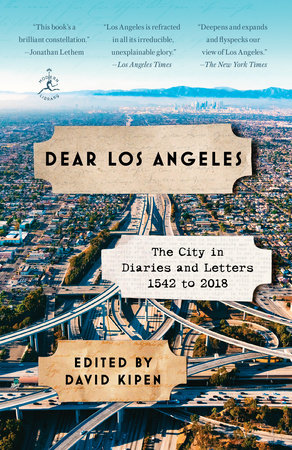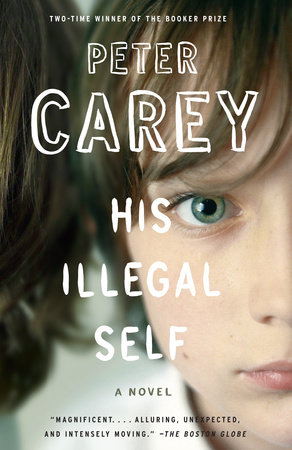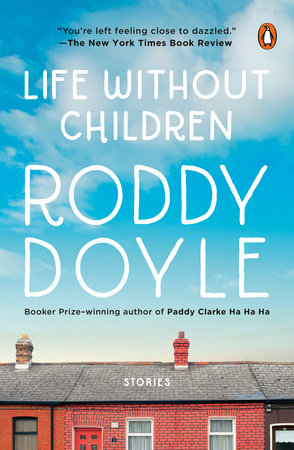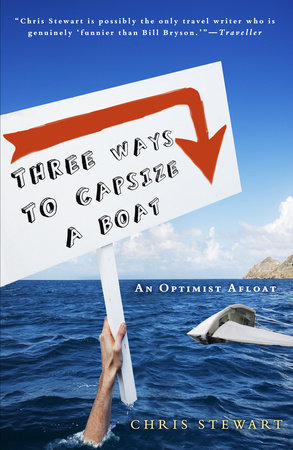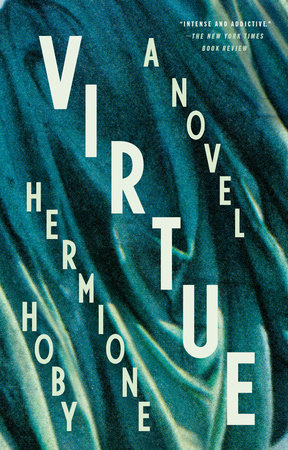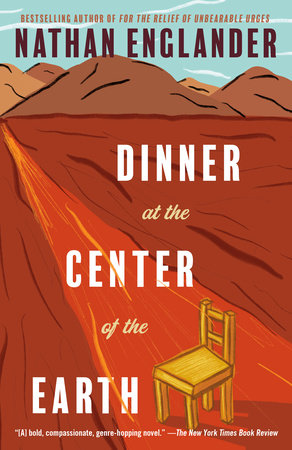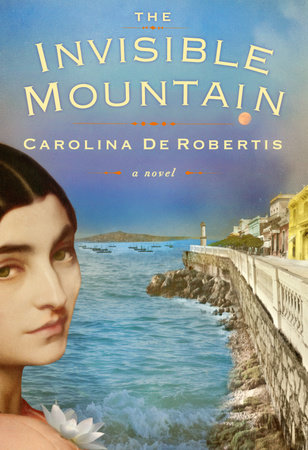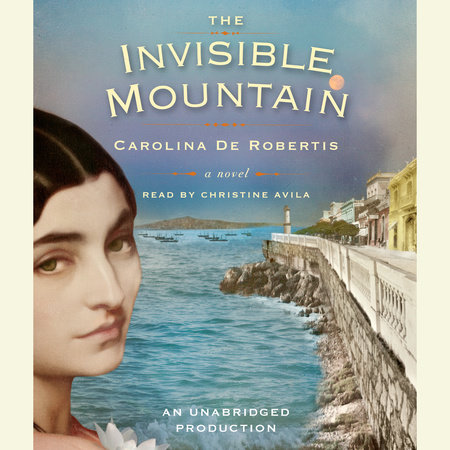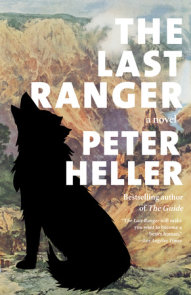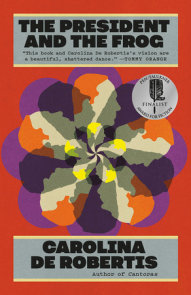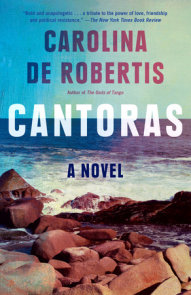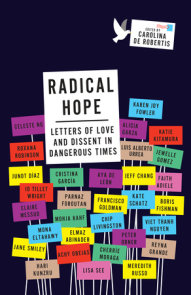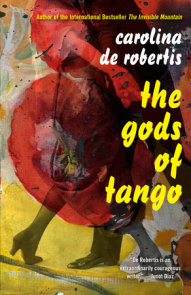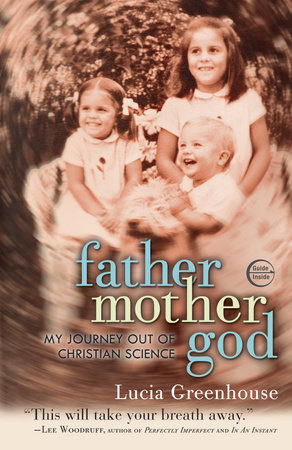Author Q&A
A Conversation withCarolina De Robertisauthor of The Invisible MountainQ: When did you first have the idea to write The Invisible Mountain and was there a particular event or idea that was its genesis?A: Books often begin out of the need for a text that does not yet exist. It is difficult to pinpoint a single moment when this book began. Though it took eight years to write, the search for it started many years before. I began as a gatherer of stories. When I was twelve, my father told me all the stories he knew of our family, reaching back to great-great-grandparents in Italy. He was going through a personal crisis, spurred by his own father’s death. My grandfather had been a distant, eminent parent, and my father had spent his whole career trying to emulate him, only to learn upon his death that he had written his children out of his will. Years later, my father would repeat history by disowning me for not conforming to his views—but for now, he poured out stories, hoping that one day I would turn them into a book. He chose me to tell, rather than my siblings, because, he said, I was the one most like his mother, the poet, who was said to be crazy, and who always loomed enormous in our family as the prototype of what an artist is and what a woman should never be. I listened to the stories and carried them inside me like radioactive seeds. When I was thirteen, I managed to find Gabriel García Márquez, Salman Rushdie, Milan Kundera, and others who exploded open new universes of what a story could be, and how it could be told. My fate was sealed as both a very nerdy teenager, and a person indelibly in love with the written word. But over the years, I couldn’t find one thing I was looking for: a novel that could open the gates to Uruguay, a country at the root of me, that I knew little about, and yet that was essential to knowing who I was. In my mid-twenties, I became obsessed with the idea of writing a book about Uruguay, as a way of understanding this country I hungered for and longed to know; I awakened to the possibility of writing my way back into a heritage I’d lost. I didn’t have to look far for a place to begin: the seeds had been waiting for years. The novelist Annie Dillard has said it beautifully: “There is something you find interesting, for a reason hard to explain. It is hard to explain because you have never read it on any page; there you begin. You were made and set here to give voice to this, your own astonishment.”Q: Are any of the characters in the novel based on your own family? Is there a particular character in the novel that interested you most? Or with whom you most identify?A: Although The Invisible Mountain is certainly a work of fiction, it draws from the stories of my own family. I took the pieces I knew from my mother and father’s lineages, and combined them to create a new family in the Firiellis. Pajarita is modeled after my great-grandmother on my mother’s side, Robustiana María Reyes, who grew up in the Uruguayan countryside, and at the age of seventeen was whisked to the city by an Italian immigrant in a traveling carnival who declared her the most beautiful woman he’d ever seen. They raised six children, and she stayed faithful to him when he disappeared for days or months at a time to engage in what, in family lore, was called “adventures.”Eva is inspired by my paternal grandmother, Tonita Semelis, who was actually from Argentina. She was a poet who published two collections in her life. She was also a clinical hypochondriac who suffered occasional, inexplicable paralysis. Like so many women of prior generations, her condition was chalked up to mental infirmity rather than seen as potentially having an understandable psychological source. When she met my grandfather, Tonita was in a wheelchair in a Buenos Aires hospital and he was her physician. My grandfather was a well-known researcher, credited with discovering synaptic vesicles, coming close to winning the Nobel Prize twice in his life, and writing the first textbook on cell biology, which is still a bible of the field in Argentina. When he gave my grandmother placebos, she rose and walked. He married her instead of the far more respectable woman his family (of immigrant Italians, humbler than the fictional version) was rooting for. They were exiled by Perón, though for other reasons than in the book, and moved to Uruguay, where they divorced in the mid-1950s. Tonita, my grandmother, stayed in Uruguay for the rest of her life, raising her son and daughter, writing copious poems, and wearing black pants and bohemian turtlenecks when most women kept to skirts.Salomé is based on a school friend of my mother’s, a teenage Tupamara who spent fourteen years imprisoned under the dictatorship and bore a child while inside. I remember when the dictatorship ended, in 1985, and my mother learned her friend had been released; I was ten years old. My mother learned from her sister that their old schoolmate had lost half her teeth, and looked much older than she really was. An unspoken weight hung in our home around this news, as though we’d collided with forces that had never been explained to me, and yet were at the heart of what was happening in Uruguay. The weight stayed with me. Choosing a favorite character feels like choosing a favorite child. It’s impossible. However, I identify with Eva and Salomé the most, for the various forbidden terrains they inhabit in their quests to live authentically. Though I have not lived their lives, I can see myself, and my own trajectory, in their stories. Q: Where does the title The Invisible Mountain come from?A: According to national lore, the name “Montevideo” comes from an early Portuguese sailor who, on sighting the land that would become Uruguay, called out “Monte vide eu,” or “I see a mountain.” The great irony in this story—which is something of a national joke, as well as a potent parable of this little nation’s self-perception—is that the city of Montevideo lacks elevation. The mountain the man was referring to is actually a low, unassuming hill. I see the themes of this story running though the characters’ lives as they hunger and strive for intangible entities they cannot see. The title also resonates for me because I see this book, in a sense, as a sprawling love letter to Montevideo—a salute to a small, inimitable city that, against all odds or visual evidence, dares to bear a name that evokes mountains. I have always lived in regions where no one knows about the tiny nation of Uruguay, where people rarely know how to find it on a map—it often feels, globally speaking, like an invisible place, as so many smaller nations do in an increasingly globalized world. Perhaps Uruguay, itself, is the invisible mountain, the complex and stunning terrain that goes unseen. I don’t think writers hold monopolies on interpretation; readers have just as much right to unfold meaning in a text, so I leave it for them to decide. Q: Why did you decide to make this story a generational saga following the lives of three generations of women over 90 years? A: The shortest, most direct answer is that this is the book that needed to be written, the book that insisted on coming through. I’m not sure that I ever made such a decision; it feels more as though the story chose me. It’s certainly true that, among the family narratives I inherited, the women’s stories fascinated me the most. The men in my lineage tended to leave an elaborate oral legacy, while the women were often glossed over with a sentence or two. It seemed to me that there must be a great deal of treasure buried in that silence, and the beautiful thing about fiction is that it can recreate such treasures, even when the factual details have been lost forever. Creating room for women’s unheard voices has also been a passion of mine beyond the world of fiction. In my early and mid-twenties, in the period when I began writing this book, I spent five years working as a full-time rape crisis counselor. I founded a program for Spanish-speaking Latinas, and listened to over a thousand rape survivors and their loved ones as they delved into and grappled with their experience with sexual assault. I simply don’t have words for how much I learned from my clients, both about the harrowing traumas they endured and the immense resilience they drew on to survive and recover. While none of their individual stories are told here, they taught me more about violence, silence, and human strength than I could have found in a hundred libraries, and I could not have written this book without them. Q: This novel spans 90 years! How did you go about planning out a novel so epic in scope?A: I didn’t. Not at first, anyway. It wasn’t so much that I planned writing something so epic; rather, I became caught up in a vision that happened to have this scope, and set out to find a way to realize the vision. I was so very new at novel-writing that I had no way to gauge, at the outset, what this project would require. This saved me from getting daunted. I doubt that first novels are ever begun with full knowledge of what it will take to finish them. We begin because we’re enraptured with something we can’t yet see, can’t yet hold in our hands, but long to. We don’t know how we’ll arrive at it, but the urge is tremendous-and so we leap. If we’re fortunate, we don’t get terrified until it’s too late to turn back. Once I was in the thick of the novel, I was amazed at how much math could be involved in storytelling, in order to align various characters’ ages and lives with the timeline of historical events. I did a lot of jumping back and forth between writing, research, and rewriting so that history and imagination and language could find their nexus. In the end, the novel took many, many drafts and eight years to complete, in part to accommodate this process. It also took eight years for another reason: I worked full-time most of those years, and the life realities of getting the rent paid are always bound to slow down the first-time novelist. Unless we have a trust fund or a wealthy spouse, we rely on “spare” time and long hours to make it happen-in other words, the writing life begins as an obsessed, relentless moonlighting. I spent countless weekends behind closed doors with the phone off and exciting events unattended, clocking in hours that I recorded diligently on spreadsheets. It was hard work; it was also exhilerating, and the best way I could have spent those years.Q: The Invisible Mountain is so vivid in its descriptions—one can really see, smell and hear everything from the butcher shop to the prison cell. How did you bring your settings so vividly to life? Have you spent much time in Argentina and Uruguay?A: I have hazy memories of my first trip to Uruguay, when I was four and my maternal grandfather was dying of cancer. On the next trip, I was sixteen; my parents sent me by myself, and that journey changed my life profoundly. I came home brimming with images and sounds and smells and textures and relationships that changed the way I approached the world, and my place within it. Since then, the longing to return has never left me. As an adult, when the need to write The Invisible Mountain became urgent, I returned to Uruguay on my own. In the years that I wrote this novel, I had very little money, as I was working at non-profits and, later on, working at non-profits and paying my way through graduate school; nevertheless, though I rarely bought a new article of clothing, I managed to go back to Uruguay three times. On each trip, I deepened my connections with my extended family there, and did the kind of research you can only do with your whole body: smelling the streets, watching strangers, listening to the songs of a neighborhood. Some of the explorations were more focused: for example, my cousin Andrea and I took a road trip north across the Río Negro to Tacuarembó, and the Montevideo City Hall provided me with historical photographs that I returned to over and over in portraying Montevideo in the earlier years. Q: The Invisible Mountain is a story about family and the power of love and legacy yet it also a gripping portrait of a nation very much shaken by the upheavals of the twentieth century. There is much actual history that runs through this novel—from the early days in Montevideo to the days of Peron in Argentina to the Tupamaros revolutionaries in Uruguay. Did you have to do any research into these events or was much of it drawn from embraces of family who lived through them? Do you have family still living in Uruguay now?A: I did an enormous amount of research. I went to many libraries, pored over books, and consulted with people who knew more than me. Toni Morrison, whose historical novels are a great inspiration, once said, “I’m just trying to look at something without blinking, to see what it was like, or it could have been like, and how that had something to do with the way we live now.” It was incredibly important to me to look the history of Uruguay in the eye, without blinking, and do my best to explore its implications for everyday life through the worlds of my characters. I have a wonderful extended family in Montevideo, and my cousins Andrea and Oscar were particularly generous with information, conversation, and help finding the answers to strange questions-not to mention a place to stay. I also drew on friends in Montevideo, like Evelyn, who gave me a stack of history books that proved immensely valuable. I also have an amazing extended family in Buenos Aires, on my father’s side. The last time I visited them, they sent me home with a huge suitcase crammed with books; the customs agents were floored. I’ve been using those books to develop my second novel. Q: What is Montevideo like today?A: It’s a completely unique city of one million people, that manages to at once be the metropolis of the nation and feel like a small town. You can walk on the street at 3 a.m., as a woman, without fearing for your safety; in fact, I’ve been with people who have run into friends at that hour, and had a spontaneous chat with no trace of hurry or surprise. The architecture is lovely, utilitarian, and often falling into disrepair. There are marvelous little bars and eateries that stay open late into the night, and corner grocers who remember selling cheese to their customers’ grandparents. There are also shut factories with broken windows. Many youth have emigrated in order to pursue economic opportunity, so many, in fact, that some stores sell greeting cards expressly for the occasion of a loved one leaving the nation. Youth also crowd the cyber cafés that dot all commercial districts, a phenomenon that is rapidly shifting the culture, as it is around the world. There’s very little violent crime, but plenty of theft, as unemployment rates and economic trouble have affected the population. Like many Latin American countries, Uruguay watched its infrastructure become gutted by the neoliberal policies of the 1990s and early 21st century, and because the economy is closely linked to Argentina’s, the crisis of 2001 has been extremely painful for the nation. Cantegriles, or slums, are plentiful along the edges of the city, and at dusk downtown rings with the sound of horseshoes as the poor ride dilapidated horsecarts through the city, gathering trash to forage through. A lot of graffiti is visible on the streets, most of it political, in the vein of “el sur también existe” (the south also exists).Uruguay has also been part of South America’s sweep toward the left. In 2004, the nation elected Tabaré Vázquez to the presidency, the nation’s first-ever head of state from the leftist third party. He continues in office today. Q: What is next for you?A: More writing, above all. I’m currently working on my second novel, which is set in Argentina in the early twenty-first century, and follows a young woman who discovers an explosive secret that links her origins to the disappearances of the 1970s. I have various ideas for my third novel, but it’s hard to tell which one of them will dig in its heels and demand to stay. In addition, I’m passionate about literary translation-for the thrill of it, for the way it sharpens a writer’s tools, and for the crucial role it has in making literature accessible across borders-and I hope to keep finding time to bring Latin American fiction into English, as I did with Alejandro Zambra’s lovely novella Bonsai. I’ve also enjoyed writing some very short stories, what are known here in the U.S. as flash fiction and what the masterful Japanese writer Yasunari Kawabata called “palm-of-the-hand stories.” There’s an immediacy to the form that I find very compelling, and a refreshing shift of gears for a novelist. I hope to explore this genre further in the future.On a personal note, I’m currently pregnant with my first child, who will be born a few months before The Invisible Mountain is published. So I’ll also be diving into the grand, ambitious, vastly creative project known as motherhood.




